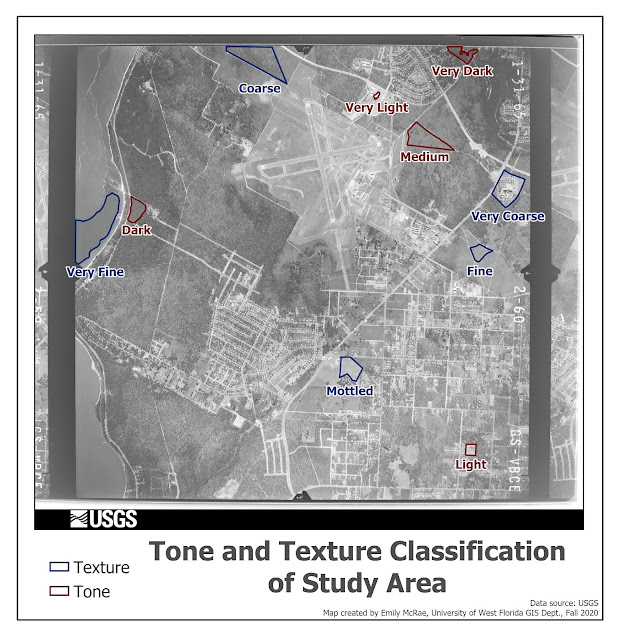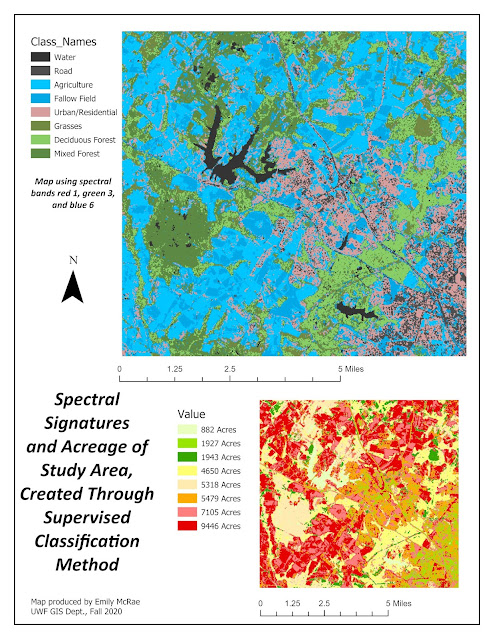GIS 4035 - Module 2 - Intro to ERDAS Imagine and Digital Data
This lab provided an introduction to using the ERDAS software for processing and deriving information about image and digital satellite data. Additionally, it provided an introduction to calculating and understanding the electromagnetic radiation as it related to satellite imagery. There were two parts to this lab. See process summary below for more information about the activities performed in the lab, and struggles encountered along the way. Part A This lab largely focuses on practicing simple movements in the ERDAS program. To begin, I opened the ERDAS IMAGE 2020 32-bit program and added the files using the folder icon. To open files, the process involves selecting the file type, in this case raster, and then setting the file properties with opening them, including selections for the display, for multiple file types, and for framing such as fit to frame, and clear display. I explored the pan and zoom options, including zooming in and out, panning using the mouse, and using ...





Comments
Post a Comment